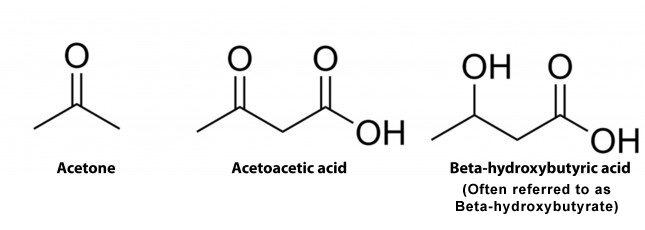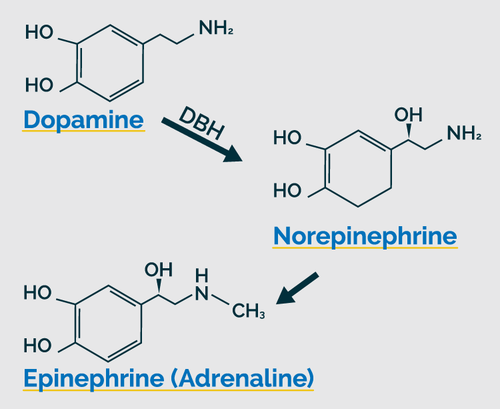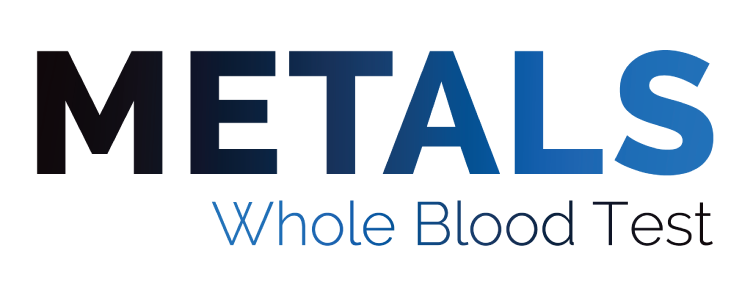By JASMYNE BROWN, ND, MS
The Great Plains Laboratory, for a while now, has offered a non-metal toxin profile, the GPL-TOX. This profile has garnered much attention for its extensive range of environmental toxins assessed. As a consultant for GPL it is my goal to shed some light on the most common toxins I get questions about.
In the assessment of this profile, we must realize that we, unfortunately, live in a toxic world. Whether we know it or not the world we live in is composed of various toxins that we are exposed to daily. The routes of exposure include inhalation, ingestion, and direct dermal contact. Because these toxins can be in the air, there are a myriad of unforeseen issues that cannot always be accounted for when assessing one’s exposures.
The first marker on this profile is the metabolite 2-Hydroxyisobutyric Acid (2HIB). This is the urinary metabolite of methyl tertiary butyl ether/ ethyl tertiary butyl ether (MTBE/ETBE) after it is processed in the human body. These chemicals are important to human health as acute and chronic exposure can lead to a range of health concerns. Acute exposure symptoms include nausea, headaches, dizziness, ocular irritation, and feelings of confusion. Chronic symptoms can include central and peripheral neurologic changes, liver and kidney damage, leaks from the gallbladder into other areas of the body, sleepiness, low white blood cell count, and has been shown to be carcinogenic in animals.
In the production of gasoline lead was the additive of choice to improve octane levels. When lead was discovered to be harmful to human health, the common gasoline additive was changed to MTBE/ETBE. After its incorporation into the gasoline used across the United States, these chemicals were found to cause harm to human health as well. Due to this fact MTBE/ETBE have been phased out as gasoline additives. The rest of the MTBE/ETBE gasoline had been phased out of use in the U.S. by the late 2000’s but it is still in the soil. This leads to common exposure in water supplies. The groundwater that is contaminated could be feeding wells and potentially city water supplies that could be exposing someone through ingestion and dermal contact.
Styrene is the next marker on the profile I commonly get questions about. On the profile it is measured by its urinary metabolite, Phenyl glyoxylic acid (PGO). This is a manmade chemical most used to manufacture plastics, rubbers, and resins. Styrene goes by other names like vinylbenzene, ethynylbenzene, cinnamene, or phenylethylene. Commonly those who work with styrene are going to have the highest risk of exposure. Occupations that involve the manufacturing of boats, tubs, and showers have rather high risks of exposure. Other exposure sources include the use of plastics as food containers or vessels for beverages. Also consider how much Styrofoam is used. Styrofoam cups and food containers have had an uptick in use due to increased carryout during the new normal the pandemic has brought us. Also heating these containers whether by leaving them in a sun exposed area or heating in a microwave can cause a migration of styrene into the food or beverage consumed out of said container. Factors that are not so easy to pinpoint from other sources due to their presence in the air include car exhaust fumes and cigarette smoke. We are additionally exposed from some photocopier toners that are made with styrene and potential groundwater contamination.
Acute symptoms of a large styrene exposure are feeling of intoxication, mucous membrane irritation, gastrointestinal effects, and respiratory effects. Chronic ongoing exposure can lead to neurologic symptoms like fatigue, weakness, depression, CNS dysfunction (reaction time, memory, visuomotor speed and accuracy, intellectual function), and hearing loss, peripheral neuropathy, minor effects on some kidney enzyme functions and on the blood. All sources of exposure should be considered when this marker populates as elevated.
Also commonly elevated is the marker for perchlorate. Perchlorate is a chemical that, when the body is exposed, is passed unchanged and is excreted as perchlorate itself. It can be taken up in large amounts in a few organs such as the thyroid, breast tissue, and salivary glands. Acute large dose exposure can lead to hypoactivity. Long term or consistent exposure typically is associated with impaired thyroid function. Due to its effect on the thyroid’s uptake of iodine prolonged exposure can lead to hypo-functioning of the thyroid gland. Symptoms of hypothyroidism can manifest because of contamination.
Sources of perchlorate are commonly occupational. It is used in the production of solid rocket propellants, munitions, fireworks, airbag initiators of vehicles, matches, and signal flares. For those that do not work with the chemical as a part of their job or hobby of choice, perchlorate can be a contaminant of groundwater. Bleach is also a common source of exposure of perchlorate that tends to be overlooked. We can also be exposed through food sources. If the water irrigation for crops, like leafy greens, is contaminated with perchlorate we can become exposed from eating these foods. Cows that are fed grass that has been contaminated can produce milk that is contaminated with perchlorate. Finding the source is necessary especially in childbearing aged women as perchlorate can pass the placenta and breast milk. This contamination in the fetus or breast-feeding child can lead to decreased iodine uptake in the child and development of cretinism.
The next common toxin is the metabolite diphenyl phosphate (DPP). This is the urinary metabolite for Triphenyl phosphate (TPHP). TPHP is an organophosphate flame retardant. It is used in manufacturing industries and can commonly contaminate water supplies. It is also a common ingredient in nail polish. Many times, I have encountered women and girls with hormonal changes associated with elevated DPP. It turned out it was their routine nail polishes that they were being continually exposed. Children are often elevated for this marker as well. Flame retardants may be used in children's products like toys, nap mats, and pajamas for their safety. In recent years, in some states, the use of TPHP has been banned in children’s products. Common health effects of TPHP contamination include neurologic changes like pins and needles, hepatic and renal complications, reproductive challenges due to the estrogenic properties, and it is potentially carcinogenic.
N-acetyl(propyl)cysteine (NAPR) marker is the urinary metabolite for 1-bromopropane exposure. This chemical exposure is one of the most difficult to pinpoint, especially if the person exposed does not work with this chemical. Most common symptoms of 1 bromopropane include neurologic changes like headaches, dysarthria, dizziness, loss of consciousness, confusion, difficulty walking, ataxia, loss of feeling in arms and legs, arthralgia (non-arthritis joint pain), and also infertility. The most common sources of exposure include solvents used for the cleaning of metal, plastics, and electronics. Additionally, the dry-cleaning process uses this chemical and it is used in the application of asphalt. 1-bromopropane is used in the furniture making process. The solvent is used as a foam glue in the cushions of furniture and as an adhesive spray. Another source of exposure is carpet and carpet cleaning. The adhesives used to keep carpeting secure and cleaners used to rid carpets of stains can have this chemical in the list of ingredients. These sources should be assessed when this marker is elevated.
Propylene oxide is another common elevation. The urinary metabolite is N-acetyl(2-hydroxypropyl) cysteine (NAHP). This chemical is often found in those who use it in their occupational duties. Propylene oxide is used in the production of polyether’s which are used for polyurethane foam production and propylene glycol. Propylene glycol is a common ingredient in cosmetic products. Other uses for this chemical include herbicides, solvents for preparation of lubricants, surfactants, and oil demulsifiers and the fumigation of medical instruments and foodstuffs. A common food propylene oxide is used to fumigate are almonds. Often the ingestion of almonds and almond based products soars when we take on gluten free, dairy free, or peanut free diets. Many people who embark on these diet changes may not be eating the organic variety of these almond based products. Oftentimes switching patients to organic almond products will reduce their exposure to this toxin. Common symptoms of toxicity are in the central nervous system. Propylene oxide is a mild CNS depressant and can lead to symptoms including fatigue, lack of concentration, drowsiness, etc.
The last marker that gets a lot of attention is acrylamide. Acrylamide is an organic compound that can be created from high heat cooking of high carb and high protein foods. The process of roasting, deep frying, and baking causes the production of acrylamide. Acrylamide is also a solvent used in the creation of polyacrylamide used in water treatment plants, making water contamination a common source of exposure source. Tobacco smoke and cosmetic products like lotions and makeup can be sources of acrylamide toxicity.
Symptoms of acrylamide toxicity include nervous system dysfunction, it is carcinogenic, and infertility. Oftentimes I find that individuals are eating a good amount of processed foods. This should be ruled out. Also due to its water-soluble nature, acrylamide is easily processed in the body and quickly excreted. If someone admits to a dietary change even temporarily prior to sample collection, this could be the cause of the elevation seen on the report.
All-in-all, the world we live in is not non-toxic. No matter what we do or where we go the opportunity for toxin exposure is upon us. In times of disease and dysfunction, ruling out elevated toxin exposure could be the cause of the symptomology presented. Assessing every aspect of life is crucial to pinpointing where these exposures could be stimming from.











































